Sanding is one of the most important stages of finishing. How well and correctly it is done depends on the final quality of the furniture or wooden objects. Because varnishes and paints not only don't hide the defects that can occur as a result of improper sanding, they actually highlight them. O proper grinding results in a well calibrated and uniform wood surface with as few raised (battered) fibres as possible and a final varnish film appearance with a pleasant, smooth, smooth tint, good adhesion to the substrate and between coats.
The quality of sanding depends on the choice of abrasive materials
The quality of the sanding is not only about how it is done but also how the abrasive materials are chosen. We may often wonder why the quality of the finished object is not as expected even though the sanding has been done correctly, both before applying the bath or primer and between coats. One answer may be the wrong choice of abrasive materials.

Abrasive materials used for sanding wood can be in the form of rolls, strips, discs, abrasive sponges. Whatever their shape, they have a backing to which the abrasive grains are bonded. Each of these 3 elements - backing, adhesive, abrasive granules - has a say in the polishing process. In addition to these elements, additional treatments may occur that give abrasives certain properties. Let's take them one by one.
The backing on which the abrasive granules are fixed
The backing is the base on which the abrasive granules are bonded. It must be strong enough to withstand the pressure exerted during sanding and have the ability to keep the grains stuck to it. The most commonly used backings are canvas and paper.
Support for canvasis used when strength and flexibility are needed. Cloth is stronger and more stable than paper. For example, cloth-backed abrasives are used when calibrating wooden panels or when sanding profiled elements, whereas paper-backed abrasives are used when sanding between layers. Cloth can have several stiffnesses, ranging from very flexible to tough, depending on requirements.
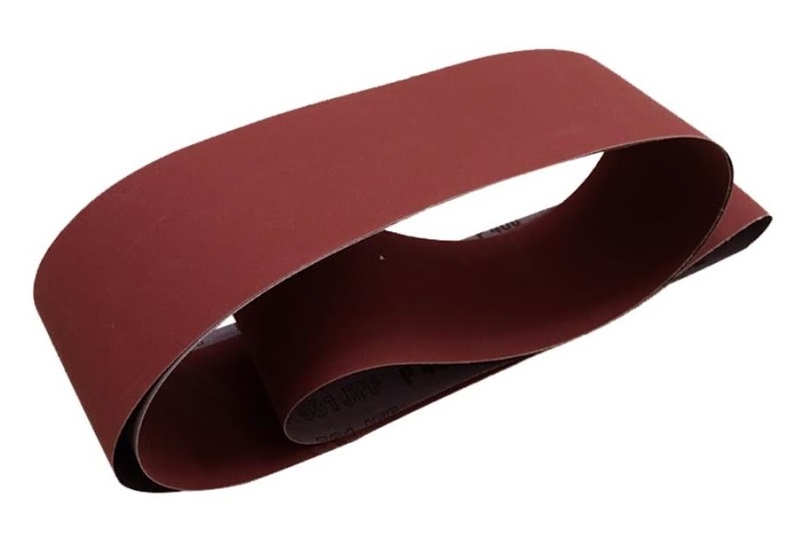
Paper used as a backing is of various weights, ranging from 90 g/m² to 280 g/m². The weight is directly proportional to the strength and stiffness of the abrasive material and is important in choosing the right material. Thus, paper weighing between 90 and 110 g/m² is recommended for hand sanding, between 120 and 180 for sanding with hand-held machines with abrasive discs, and over 220 for use on machines.
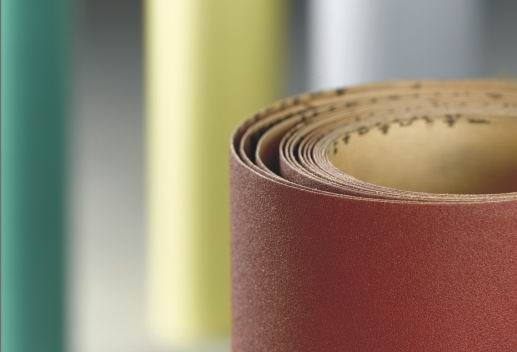
Influence of grain-setting adhesives on sanding
The adhesives used to bond the granules are synthetic resins. Natural products - bone glue - used to be used, but the properties of synthetic resins are easier to control and perform better. Two layers of adhesive are used to make abrasives, for gluing and re-gluing (R/R). Gluing bonds the abrasive grains to the backing while re-gluing secures them against movement during sanding.
The amount of adhesive applied to the backing influences the abrasive material. A thinner layer of adhesive means a more aggressive product, but with reduced resistance over time, whereas a thicker layer of adhesive means longer use time, but less aggressive sanding. High aggressiveness is needed, for example, when calibrating, while low aggressiveness is needed when sanding between layers (sanding the primer).
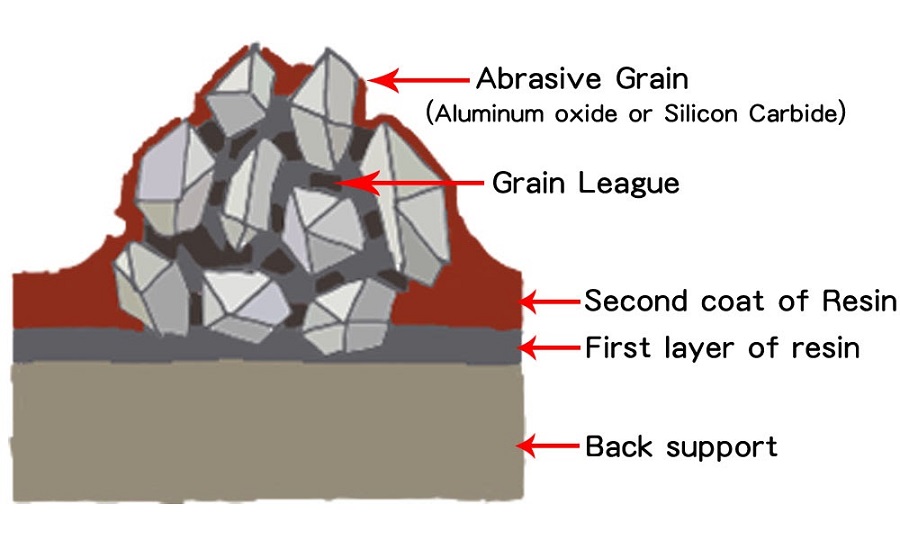
Types of abrasive granules
Abrasive grains are basically those that act on wood or primer. Their choice is very important because they are the ones that make sanding efficient or fine, delicate. In the past sand was used as an abrasive material. Nowadays, however, these grits are obtained industrially. The most commonly used materials are aluminium oxide and silicon carbide. There are others, including aluminium trioxide, zirconium oxide or electrocorundum (a mixture of aluminium oxide and carbon).
Aluminium oxide granules are suitable for most uses, being sufficiently sharp and hard. Silicon carbide is less brittle than aluminium oxide (harder) and the grains are less sharp. This makes it suitable for sanding hard wood (oak, beech), but also MDF, which has hard particles inside. The fact that the silicon carbide grains are less sharp makes them suitable for sanding between layers or polishing.
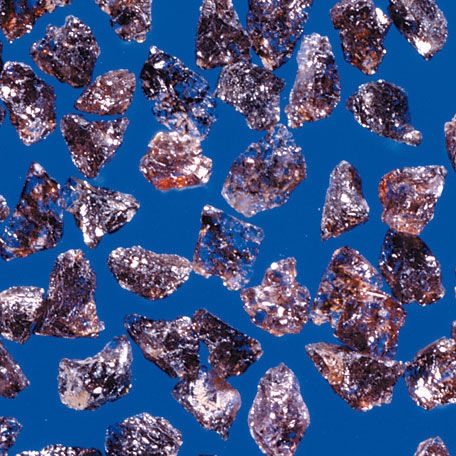
Important is also how they are the granules are arranged on the support, closer together or further apart (pressing). A sparse pressing means that abrasive materials will clog more slowly with the dust from sanding, whereas a coarse pressing will result in a more uniform sanding.
Choice of abrasive materials
The most common choice of abrasives is granulation. It represents the number of meshes/1 square inch of a site through which abrasive grains pass. It is a theoretical number and is set by standards. The one most commonly encountered, Pxx (e.g. P80, P220), is set by the Federation of European Producers of Abrasives (FEPA). Grain sizes get smaller and smaller as grain size increases. To give you an idea I will give you some examples:
- P80 200 micron wood pellets
- P150 100 micron wood pellets
- P280 52 micron granules for primer
- P320 46 micron granules for primer
- P1000 18 micron polishing granules
- P2000 10 micron polishing granules
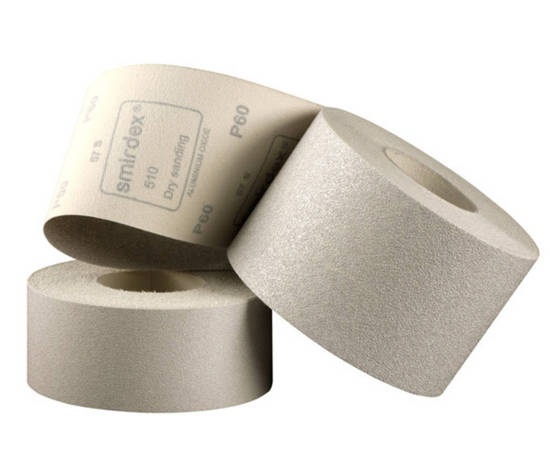
Sometimes abrasive materials have additional properties. Perhaps not infrequently you have been offered stearate abrasives. This is an additional layer that is deposited on the material to reduce clogging. During sanding the stearate decomposes into a gas and prevents the resulting dust from settling. It is recommended for sanding papers used for between-coat sanding, but is not recommended for cloths used for coarse sanding because it wears out very quickly, after which the cloth clogs easily.
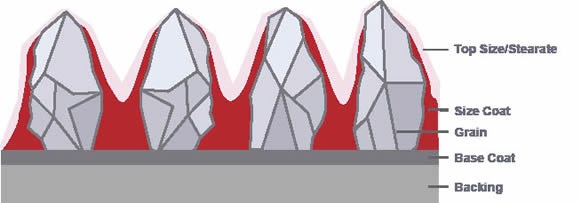
Also in order not to clog very easily it is used as a support antistatic paper.
There is a lot more to be said about abrasive materials, belt splicing, machines and equipment used for sanding, the hardness of the drums. In addition, each of the above topics can be further developed and expanded upon. That's why I suggest you look for the continuation in the March 2018 print edition of the magazine.
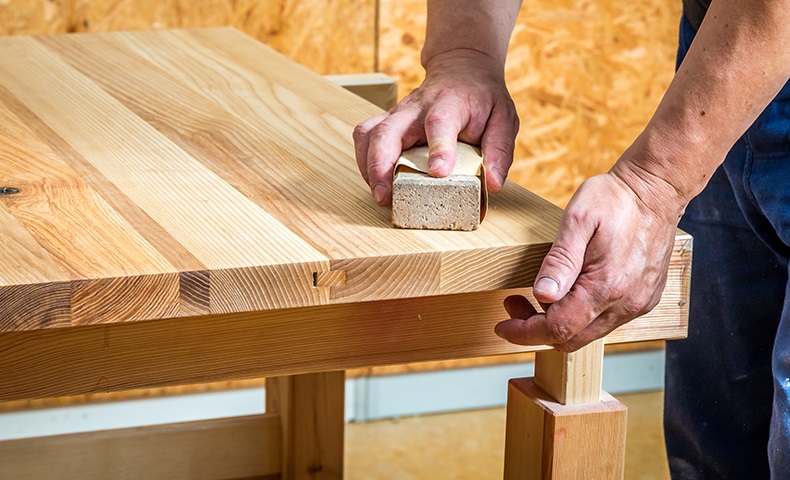





















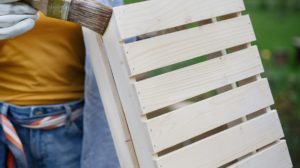
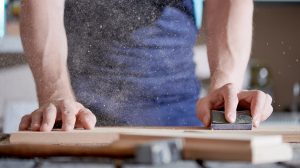
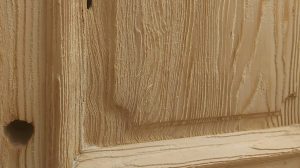
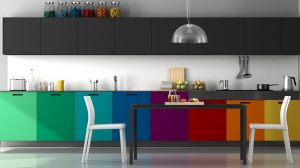
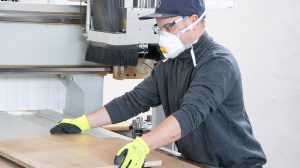
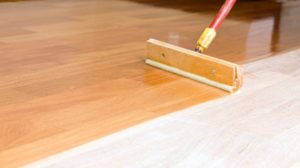

Add comment